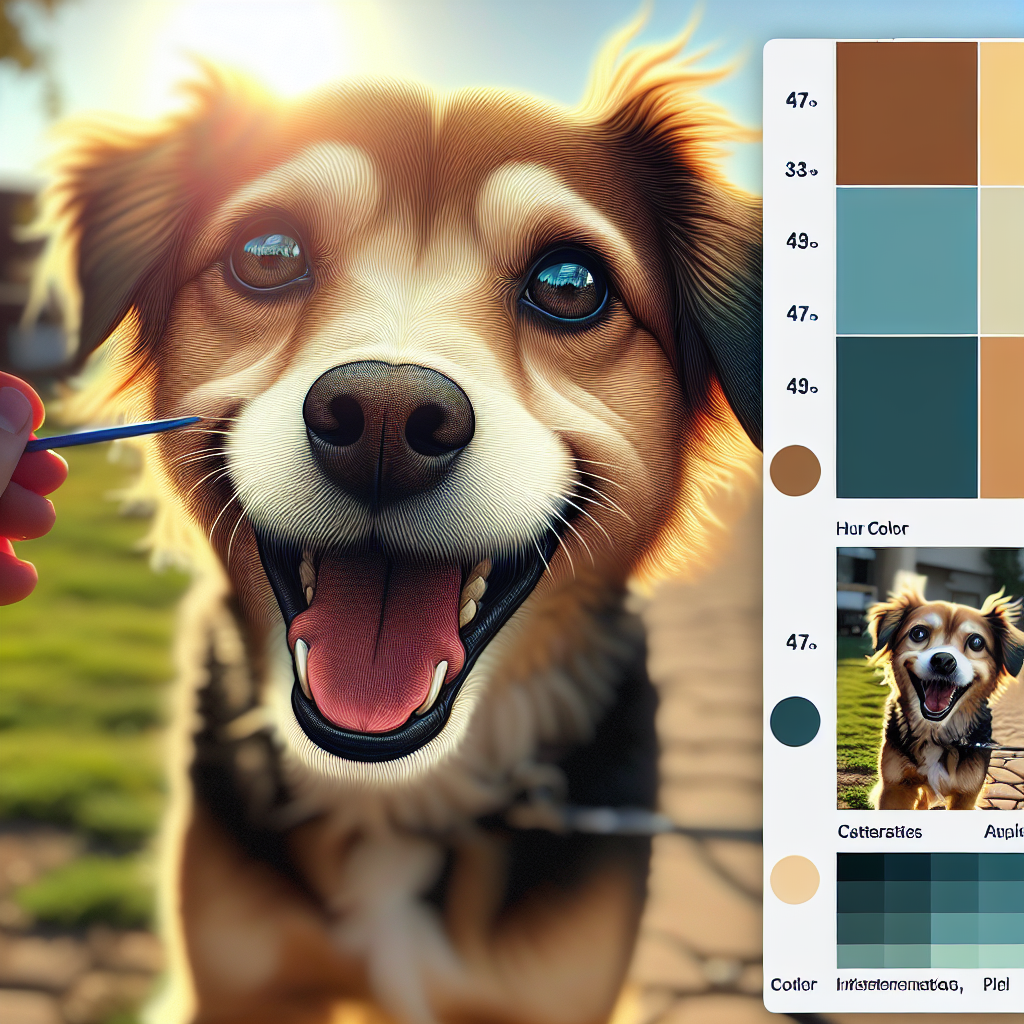Starting the Battle: Understanding Fleas

Alright, let’s get down to brass tacks. Fleas. Those pesky little buggers that make your home feel like a battleground. You’d think such tiny creatures wouldn’t cause such a ruckus, but oh, they do. Understanding these critters is the first step in our quest for a flea-free home. They’re small, they’re jumpy, and they’ve got a knack for making life miserable. You’ll find them lurking in the shadows, waiting to pounce on your unsuspecting pets.
You know you’ve got a problem when you see flea infestation signs in home. Your pets scratching like they’re auditioning for a drum solo? That’s your first clue. Fleas love the warmth and the cozy nooks of your house. They’re not just on your pets—they’re in your carpets, your furniture, maybe even in your bed. Ew, right? But don’t worry, we’ve got this.
Fleas are not just a nuisance; they can be a health hazard. They carry diseases and can cause allergic reactions. The key here is to break their life cycle. Catch them before they multiply. Sounds like a mission? Well, it is, but it’s one we can tackle.
Identifying the Trouble Spots at Home
Let’s play detective for a minute. You’ve got to identify the flea hotspots in your house. They’re sneaky, but not invisible. Common hiding places? Try pet bedding, carpets, and upholstery. Fleas love these spots—it’s where they hang out, lay low, and breach their next attack.
Walk around your house like you’re on a treasure hunt. Look for flea dirt. It’s not gold, but if you find it, you know you’re in the right place. Flea control for pet bedding is crucial. Wash it all—hot water is your ally here. Go through every nook and cranny of your home. Check under furniture and along baseboards. That’s where the action is.
Once you’ve pinned down the trouble spots, you’ve got a fighting chance. You can’t just spray and pray, though. It’s about strategy. It’s about knowing your enemy.
Arm Your Pets: Flea Treatments That Work
Now, let’s talk about your pets. They’re the frontline soldiers in this battle. You’ve got to arm them with the best flea treatment for pets. There are so many options out there—oral tablets, topical treatments, collars. Pick the one that suits you and your furry friend. Talk to your vet if you’re unsure. You want something that works, something that knocks those fleas dead.
Your pets deserve to be happy and itch-free. Keep them protected, and you’ll be one step closer to a flea-free home. Remember, it’s not just about killing the fleas on them; it’s about preventing new ones from hitching a ride.
Flea treatments aren’t just a one-and-done deal. You’ve got to be consistent. Regular treatments are key. Don’t slack off, or those fleas will come back with a vengeance.
The Power of Clean: Vacuuming and Washing
Alright, time to get your hands dirty—or clean, in this case. Vacuuming is your new best friend. Set up a daily vacuum routine for fleas. You’ve got to suck them up before they get a chance to settle down and start a flea family. Vacuum carpets, rugs, and furniture. Don’t forget the corners where dust bunnies like to hide.
After vacuuming, it’s time for a wash. Pet bedding, your bedding, and any other fabric that might be harboring fleas. Hot water is a must. It’s like a flea apocalypse, and you’re the hero bringing the heat.
This is where the power of clean really shines. It’s not just about making your house look nice; it’s about making it unwelcoming for fleas. They hate clean places—so, naturally, that’s what you want.
Homemade Remedies: Simple Solutions for Flea Control
Now, let’s get a little DIY. Homemade remedies can be a lifesaver. A homemade flea spray recipe is a great tool in your arsenal. You can whip up a concoction with vinegar, water, and a few drops of essential oils. It’s natural, it’s effective, and it’s cheap.
Natural flea deterrents are your friends. Think cedar chips, diatomaceous earth, and lemon spray. These won’t just help with the flea problem; they’ll make your home smell nice too. Who doesn’t love a two-for-one deal?
These remedies are great, but remember, they’re part of a bigger strategy. You’ve got to combine them with regular cleaning and pet treatments. It’s all about creating a hostile environment for fleas.
Alright, folks, you’ve got the tools, and you’ve got the know-how. It’s time to take back your home. Fleas don’t stand a chance against a determined pet owner. Thanks for sticking around—now go get ‘em!
The Battle Plan: Decluttering and Deep Cleaning
Alright folks, let’s dive right into the mess—literally. Here you are, staring at your home, wondering how to get rid of fleas in the house. Well, it all starts with a battle plan, and the first step is to declutter. Ever notice how these pesky little jumpers love clutter? It’s like a flea playground in there. So, what do we do? We declutter the house for flea removal. Toss out that pile of magazines from 2012, donate those clothes that haven’t seen daylight since Y2K.
Deep cleaning comes next. It’s not just about making the place look spiffy. We’re talking about getting rid of every nook and cranny where fleas can hide. This is war, after all. You’ll want to scrub down surfaces, wash baseboards, and even tackle the dreaded dust bunnies under your bed. Think of it as a two-for-one deal; you get a clean house and a flea-free zone. And if you’re wondering if this all sounds like a lot of work—well, it is. But remember, you’re the hero here, not some sidekick. Grab your cleaning gear and let’s get to it!
Vacuuming: Your Secret Weapon
Now, here’s where things get a bit more exciting. A vacuum cleaner is no less than your secret weapon. I know, I know, vacuuming isn’t exactly rock ‘n’ roll, but hear me out. Get the best vacuum for fleas, and you’ll be strutting around like a rockstar. The trick is in the suction. Fleas love to hide in carpets, and where do they lay their eggs? Yep, right in the fibers of your carpet or even the cracks of hardwood floors.
When you vacuum, you’re not just picking up dirt—you’re eliminating the enemy. Do it regularly and meticulously. Don’t forget those hard-to-reach places; fleas love those spots. Vacuuming might not make you famous, but it will make you a flea-killing legend in your own home. Did I mention you should also empty the vacuum bag or canister outside? Trust me, you don’t want those little critters crawling back out.
Wash, Rinse, Repeat: Laundry Tactics
Let’s talk laundry. Washing clothes to kill fleas sounds straightforward, right? Well, yes and no. You’ve got to do it right. High heat is your friend here. Fleas hate it. So, you want to wash everything—bedding, pet blankets, your clothes. If it fits in the washing machine, it goes in. And don’t skimp on the dryer. High heat, folks. That’s the ticket.
You’ll need some laundry tips for fleas, though. Make sure you’re using the hottest water safe for the fabric, and don’t overload the machine. You want all those clothes swirling around, getting the full treatment. It might feel like you’re running a laundromat at home, but that’s the price you pay for a flea-free existence.
Flea Traps: The Quiet Assassin
Now, let’s get sneaky. Flea traps—these gadgets are the quiet assassins in your arsenal. They don’t make a sound, but boy, do they get the job done. You might be wondering about flea traps effectiveness, and let me tell you, they’re the real deal. Just set them up and watch the magic happen.
Strategically place them around the house—especially in areas where you or your pets spend the most time. These little traps will lure fleas in with a warm light and a sticky surface. Once those fleas hop in, they’re done for. It’s like setting up little ambushes throughout your house.
Remember, though, they’re part of the plan, not the whole plan. Use them alongside your decluttering, vacuuming, and washing efforts. And while they won’t catch every flea, they’ll certainly put a dent in the population.
Natural Remedies: Mother Nature’s Backup
Now, if you’re not keen on chemical warfare, Mother Nature’s got your back. Natural flea remedies at home can be just as effective. Essential oils like lavender or cedarwood can be mixed with water and sprayed around your house. Not only do they repel fleas, but they also leave your home smelling like a fancy spa.
Diatomaceous earth—sounds fancy, right? Well, it’s just a powdery substance you sprinkle onto carpets and let sit. It dehydrates fleas, and you vacuum it up later. Simple as pie. But remember, persistence is key. Natural remedies take time, so don’t expect overnight results.
You’re not just battling fleas; you’re learning skills that would make MacGyver proud. And in the end, when you’ve put down your vacuum and hung up your cleaning gloves, you’ll not only have a flea-free home but a newfound respect for the humble household chore.
Thanks for sticking with me on this journey. You’re the real MVP here, armed with a vacuum and a bit of grit. May your home be flea-free soon!
The DIY Flea Trap: A Nighttime Adventure
Alright, so imagine this. It’s the dead of night, the house is quiet, and the only sound is the gentle hum of your fridge. Meanwhile, in the dark corners of your home, a tiny army of fleas is plotting its next move. But wait—you’re ready for them. Enter the DIY flea trap. This is where the magic happens—or at least where the fleas meet their match. It’s almost like setting up a late-night ambush, minus the camouflage and face paint.
Here’s how you do it. Grab a shallow dish, fill it with water, and add a few drops of dish soap. Place a lamp right above it. The light attracts the fleas, they hop in, and the soapy water does the rest. Some folks even say it’s like fishing, but for fleas. And trust me, you’ll be surprised by how many of these critters you can catch overnight with this DIY flea trap nighttime setup. It’s not just an old wives’ tale—it’s a tried and true method of home flea control.
Essential Oils: Nature’s Unseen Warriors
Ever feel like your spice cabinet is just sitting there, underutilized? Well, get ready to raid it. Essential oils are your new best friend when it comes to getting rid of fleas in the house. These aren’t just fragrant little bottles that make your home smell like a meadow—they’re nature’s unseen warriors.
Peppermint, lavender, eucalyptus—these oils are not just for making your home smell like a spa. Fleas hate them. Mix a few drops of essential oils for fleas with water in a spray bottle, and you’ve got yourself a natural flea repellent. Spritz it around your home, focusing on areas where your pets hang out. And don’t forget those hard-to-reach spots where fleas love to hide. It’s like chemical warfare, but, you know, with plants.
Vacuum Like You Mean It: The Art of Sucking Up Fleas
Dust off that vacuum and get ready for action. Every corner counts in this battle. Fleas are not just lounging around in plain sight—they’re in your carpets, your pet’s bedding, and those dark corners you never think about. Vacuuming isn’t just about keeping your floors clean; it’s the art of sucking up fleas.
Here’s the kicker: you gotta be thorough. Move that couch, get under the bed, and don’t stop until you’ve covered every inch of your home. And when you’re done, empty the vacuum bag outside—far away from your house. It’s a little dance you do, a routine, but it’s worth it. Vacuum flea removal is one of the most effective methods out there. I know, vacuuming isn’t anyone’s idea of a good time, but hey, you’re on a mission here.
Laundry Day: Not Just for Dirty Socks
Time to give your fabrics a wash. Fleas hate it, but your clothes will love it. You know those days when you’ve got piles of laundry and you just can’t be bothered? Well, this isn’t one of those days. Fleas love to hide in fabrics—rugs, pet blankets, your favorite hoodie. Washing fabrics fleas have settled into is key.
Set your washer to hot and let it do its thing. Adding a bit of vinegar can help, too. It’s like giving your home a fresh start. And while you’re at it, consider washing your pet’s bedding. They’ll thank you for it, and you’ll sleep better knowing you’re one step closer to a flea-free home. Who knew laundry day could be so satisfying?
Stay Vigilant, Stay Flea-Free: The Ongoing Battle
Here’s the thing: getting rid of fleas in the house isn’t a one-time gig. It’s an ongoing battle. Spoiler: You’ll need a game plan to keep them from coming back. Think of it as a new chapter in your life—one where vigilance is your best friend. Armed with flea prevention tips, you’re ready to tackle anything.
Regular checks, consistent cleaning, and a few tricks up your sleeve will keep those pesky jumpers at bay. Maintain a flea-free home by keeping an eye on your furry friends, checking them regularly. And remember, a little essential oil here, a vacuum session there, and you’re golden.
It’s a journey, not a destination. But hey, isn’t life a bit like that? You’re doing great, and your home will soon be as flea-free as a monk’s head. Thanks for sticking with me through this adventure, and may your days be filled with less scratching and more peace. Keep fighting the good fight!
Quick Takeaways:
So, you’re waging war against fleas in your house. Good on you! These little suckers are relentless, but so are you. First things first, the flea infestation signs in your home are a wake-up call—itchy pets, mysterious bites, and those annoying little specks jumping around. Once you’ve spotted them, it’s time to roll up your sleeves.
Start with the best flea treatment for pets. Trust me, treating your furry friends is non-negotiable. If they’re still hosting a flea jamboree, your house will be a flea haven. After that, embark on a daily vacuum routine for fleas. It’s not glamorous, but it’s effective. Make sure to use the best vacuum for fleas you can get your hands on—something with a good HEPA filter.
Don’t underestimate the power of a homemade flea spray recipe. You can whip up a concoction with essential oils for fleas that smells divine and sends fleas packing. And how about some natural flea deterrents? Cedar chips, diatomaceous earth—these are your new best friends.
Declutter the house for flea removal. Fleas love nooks and crannies, so don’t give them any. And don’t forget about flea control for pet bedding. Wash everything in hot water. Speaking of washing, washing clothes to kill fleas is a must. It’ll help keep the little pests at bay.
Remember, effective flea removal methods involve a combination of strategies. Flea traps effectiveness can vary, but they can be a good supplementary tactic. So, stick with it, and soon, your home will be a flea-free fortress.
FAQs:
1.
How do I know if I have a flea infestation in my home?
Fleas are sneaky, but they leave clues. Flea infestation signs in your home include pets scratching more than usual, finding small, red bites on your ankles, or spotting tiny jumping specks on your furniture. If you suspect fleas, it’s time to act.
2.
What’s the best flea treatment for pets?
The best flea treatment for pets depends on the animal. Consult your vet, but popular options include topical treatments, flea collars, and oral medications. Remember, treating your pet is the cornerstone of how to get rid of fleas in the house.
3.
Can vacuuming really help with flea removal?
Absolutely, but not just any vacuum will do. Use a vacuum with a high-efficiency filter—it’s a daily grind, but vacuum flea removal is crucial. Focus on carpets, rugs, and upholstery. Don’t forget those sneaky spots under furniture.
4.
Are there natural flea remedies at home I can try?
You bet! Natural flea deterrents like diatomaceous earth can work wonders. Sprinkle it around your home and let it sit before vacuuming. Essential oils for fleas, like lavender and peppermint, can also be mixed with water to create a spray.
5.
How do I maintain a flea-free home once they’re gone?
It’s all about vigilance. Keep up with your daily vacuum routine for fleas, wash pet bedding regularly, and use flea prevention tips like keeping your lawn trimmed. Regularly check your pets for fleas and continue with their treatments. Consistency is the key to keeping those jumpy pests away.
Conclusion:
And there you have it—the not-so-glamorous but absolutely necessary battle plan for how to get rid of fleas in the house. Fleas are relentless, but so are you. With a bit of grit and determination, you can oust those unwelcome guests. Remember, it’s not just about one method; it’s about a full-on assault. From vacuuming to washing fabrics to setting up DIY flea traps at nighttime—every little bit counts.
As you dive into this battle, keep in mind that maintaining a flea-free home is an ongoing process. It’s a lifestyle, really. But hey, you’ve got this! By sticking to these strategies, you’re not just fighting fleas; you’re reclaiming your space.
So, here’s to you, the flea-fighting warrior. Thanks for hanging in there with me on this journey. May your home soon be as flea-free as a monk’s head.
References:
1. [EPA – Controlling Fleas and Ticks Around Your Home](https://www.epa.gov/pets/controlling-fleas-and-ticks-around-your-home)
2. [WebMD – Kill Fleas at Home](https://www.webmd.com/pets/kill-fleas-at-home)
3. [Harvard Health – How to Get Rid of Fleas: Protecting Your Home and Pets](https://www.health.harvard.edu/staying-healthy/how-to-get-rid-of-fleas-protecting-your-home-and-pets)
4. [Healthline – How to Get Rid of Fleas](https://www.healthline.com/health/healthy-home-guide/how-to-get-rid-of-fleas)
Our solution eradicates fleas on contact without harmful chemicals, ensuring a safe environment for your pets and family. Easy to use and highly effective, SayByeBugs helps you maintain a flea-free home. Learn more and order today at SayByeBugs.com
Our solution eradicates fleas on contact without harmful chemicals, ensuring a safe environment for your pets and family. Easy to use and highly effective, SayByeBugs helps you maintain a flea-free home. Learn more and order today at SayByeBugs.com








